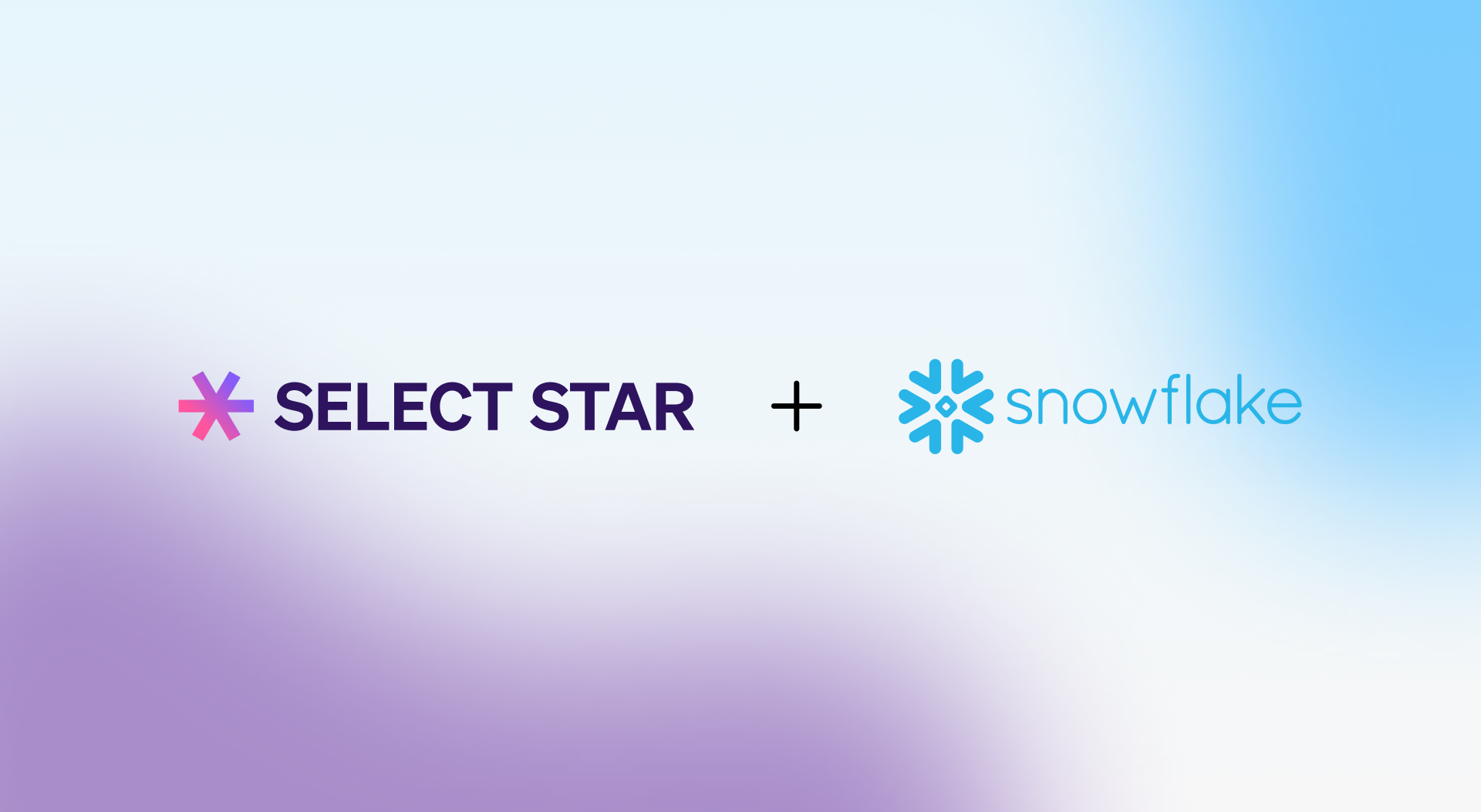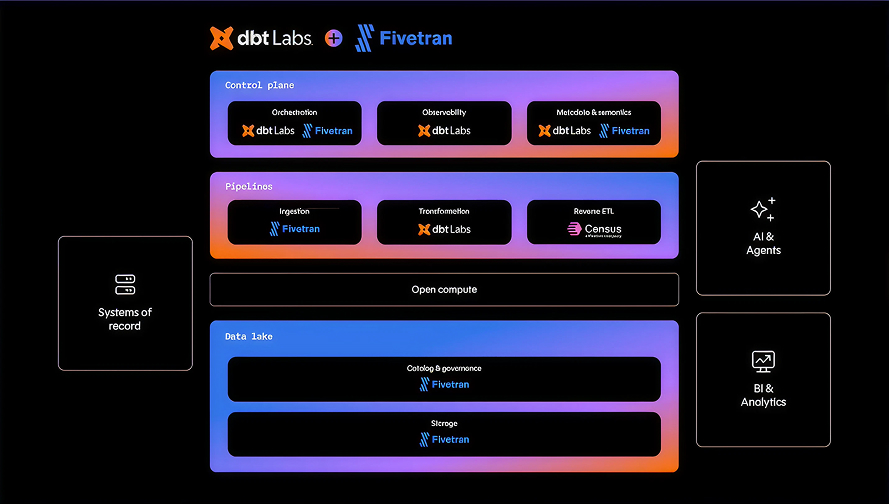Data catalogs have rapidly become an essential part of modern data infrastructure. With growing data complexity, stricter governance requirements, and the rise of AI-driven workflows, companies are investing heavily in robust data catalogs to ensure their teams can efficiently discover, manage, and leverage their data assets.
With an abundance of options available, choosing the right data catalog tool for your organization can be challenging. But how do you pick the right one? In this guide, we'll break down the essentials of data catalogs, explore the must-have features for 2025, and highlight the leading platforms across different categories.
TL;DR: Choosing the Right Data Catalog Tool
- Data catalogs are essential for discovery, governance, and scaling AI initiatives.
- There are three main types: Open-source, Platform-native, and Proprietary each with trade-offs in flexibility, integration, and features.
- Leading tools include Select Star, Amundsen, OpenMetadata, Snowflake Horizon, and Databricks Unity Catalog.
- Key features to prioritize: automated metadata collection, cross-platform search, column-level lineage, AI readiness, and governance workflows.
- For best results, align your choice with your cloud architecture, governance maturity, and AI use cases.
What is a data catalog tool?
At its core, a data catalog is a centralized repository that collects and manages metadata, making data more discoverable and usable for your team. It supports key functions such as governance, quality assurance, and collaboration by maintaining clear and organized data definitions.
As organizations continue to accumulate massive volumes of data, knowing exactly which datasets to use and when has become increasingly complex. Without a data catalog, data teams often spend excessive amounts of time manually searching for the right datasets, verifying their accuracy, and clarifying their context.
A data catalog resolves these challenges by providing clarity on data origins, relationships, and dependencies, ensuring users always know which data assets are most relevant and trustworthy for their analytical needs.
Top Data Catalog Tools List
The growing demand for data governance, self-service analytics, and AI readiness has led to a proliferation of data catalog solutions. Whether you're a small startup looking for open-source cost-effectiveness or a global enterprise with complex governance needs, there's a catalog built to meet your requirements. In this section, we share the leading tools by category, specialized, platform-native, and open-source, so you can compare their strengths and find the best fit for your data stack.
Specialized Data Catalog Tools
Proprietary data catalogs offer the most mature feature sets across governance, lineage, discovery, and integrations. These solutions are designed to scale with enterprise needs and are typically supported by dedicated customer success, security certifications, and roadmaps aligned to emerging trends like AI readiness. Many of them also integrate with broader data governance or data intelligence platforms, making them ideal for organizations seeking a unified approach.
1. Select Star
2. Alation
3. Atlan
4. Coalesce Catalog
5. Collibra
6. Data.World
7. Secoda
8. Informatica
Platform-Native Data Catalog Tools
Platform-native data catalogs are built directly into modern cloud data platforms like Snowflake, Databricks, or Microsoft Purview. These tools provide tight integration with the host environment, enabling streamlined access control, metadata management, and governance features tailored to each platform’s architecture. For teams already committed to a specific ecosystem, platform-native catalogs offer a convenient and efficient starting point though they often require supplementary tooling for multi-cloud or cross-platform use cases.
9. Snowflake Horizon & Open Catalog
10. Databricks Unity Catalog
11. dbt Catalog
12. AWS Glue Data Catalog
13. Google Cloud Dataplex Universal Catalog
14. Microsoft Purview
15. Oracle Enterprise Metadata Management
Open-Source Data Catalog Tools
Open-source catalog tools offer a cost-effective and flexible entry point for organizations seeking to implement metadata management and data discovery without a large initial investment. These platforms often benefit from vibrant community development, transparent roadmaps, and the ability to customize features to suit unique data environments.
Several open-source options have matured into capable catalog solutions that support core use cases like metadata ingestion, search, and even lineage:
16. Amundsen
17. Apache Atlas
18. Marquez
19. OpenMetadata
20. DataHub Core
Selecting the right data catalog is a strategic decision that directly influences how effectively your organization can manage, trust, and scale its data initiatives. The right solution should not only meet your immediate technical requirements but also align with your broader goals around data governance, AI readiness, and organizational adoption.
Core Data Catalog Features to Evaluate in 2025
With a wide range of data catalog tools on the market, each offering different levels of automation, governance, and usability, it can be difficult to know which features matter most for your organization. Whether you're scaling your data team, preparing for AI initiatives, or strengthening compliance, the right catalog should support your business goals while reducing the burden on your team.
When selecting a data catalog, add these essential features to your checklist:
Selecting the right data catalog is a strategic decision that directly influences how effectively your organization can manage, trust, and scale its data initiatives. The right solution should not only meet your immediate technical requirements but also align with your broader goals around data governance, AI readiness, and organizational adoption.
To help you navigate this process, we recommend reviewing our guide on how to run an effective POC to structure your evaluation. Additionally, our guide to driving adoption of your data catalog offers actionable insights for onboarding, communication, and fostering long-term engagement across your data teams.
Data Catalog Tool Use Cases for Analytics and AI Governance
Data catalogs have long served as a foundation for core use cases like data discovery, lineage, and governance, helping organizations manage complexity, improve data quality, and ensure compliance. But as analytics and AI initiatives become more sophisticated, new use cases are emerging that require deeper context, greater automation, and stronger alignment across teams.
Organizations increasingly rely on data catalogs to unlock the full potential of these initiatives. By centralizing metadata, these tools provide critical context that supports everything from faster decision-making to data-aware copilots for data engineers, analysts, and business users
- Semantic Model Management: As organizations move toward metric standardization and self-service analytics, data catalogs are playing a critical role in organizing and governing semantic models (like those used in LookML, dbt Metrics Layer, or Microsoft Fabric). Catalogs can generate these models and ensure they are consistent, discoverable, and aligned with business definitions.
- Training Data Transparency: For AI governance, it's essential to track which datasets are used to train models. To ensure explainability and compliance, data catalogs are increasingly used to tag and classify inputs, monitor data quality, enforce usage policies, and track training data lineage, supporting both internal audits and regulatory transparency.
- Prompt and Model Input Auditing: In generative AI workflows, understanding which data sources influence prompts or embeddings is vital. Catalogs can log and audit which metadata assets feed into LLM-based systems, helping manage context and prevent model drift.
- Model Context Protocol (MCP) Integration: Data catalogs are starting to support standards like MCP, enabling dynamic context injection into AI systems. This supports explainability, helps LLMs reason over metadata, and connects model outputs back to governed data assets.
- Data Product Enablement: Catalogs are evolving to support data product frameworks, grouping datasets, documentation, quality metrics, owners, and SLAs into packaged “products” that serve analytics and AI consumers with context and governance built-in.
A great example of this in action is how HDC Hyundai used Select Star to prepare for AI initiatives by centralizing metadata and aligning business and technical definitions. By automating data discovery and lineage, Hyundai was able to accelerate project delivery while improving trust and transparency across their data stack.
2026 outlook for data catalogs
Looking ahead, the data catalog space is rapidly evolving. One major shift is the movement toward active metadata management, which goes beyond traditional, static cataloging to support real-time updates, dynamic recommendations, and automated metadata flows across systems. Another emerging capability is advanced AI search, powered by technologies like vector embedding and semantic search, which significantly improves how users discover and understand data. We're also seeing increased adoption of LLM-driven governance, where large language models help automate policy enforcement, detect anomalies, and support nuanced compliance use cases.
Ready to dive deeper? Schedule a demo and explore how Select Star can help you automate discovery, visualize lineage, generate semantic models and centralize metadata governance across your data stack.









